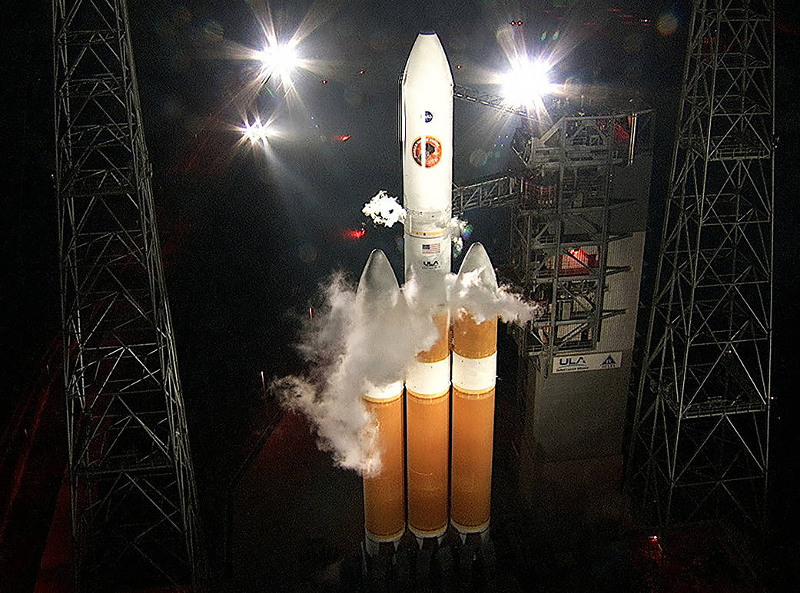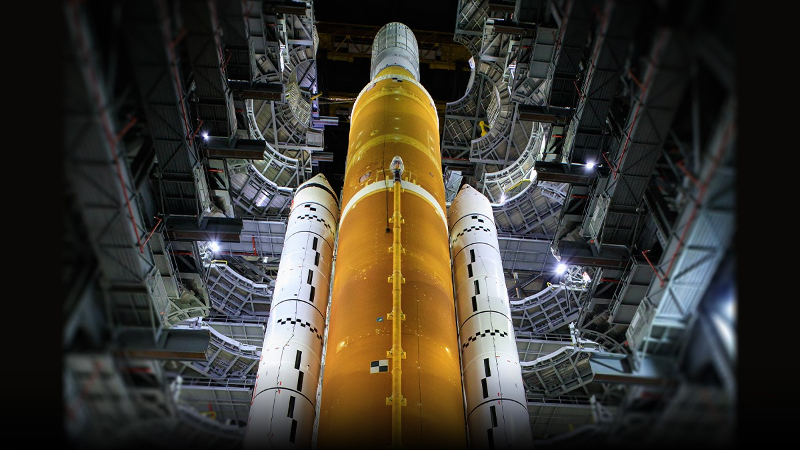What is rocketry?
Rocketry is the only proven way to get things into space. Throughout the long history of spaceflight, there have been predominantly three types of rocketry that have actually been used in missions, those being solid propulsion, liquid propulsion, and ion propulsion. Understanding the difference between these is an important part of understanding how different rockets work.
Solid Propulsion
Solid propulsion is the simplest form of propulsion currently in use for rockets. It involves a single combustible fuel source. While solid propulsion is much cheaper than its liquid or ionic counterparts, it has one major drawback: control. Once a solid rocket engine is ignited, it cannot be stopped without the total termination of the vehicle. Solid propulsion methods are unable to be throttled as well, meaning they cannot change the amount of thrust they produce. It is also extremely combustible, making it unsafe for use in manned missions. However, it can be used alongside liquid propulsion systems, which was most notably seen during the space shuttle era.
Liquid Propulsion
Liquid rockets are the most commonly used rockets in modern spacecraft. While much more complex than solid rockets, it is much safer for manned missions and has much greater control. The fuel source can be cut off from the combustion chamber to stop the propulsion of the rocket, and the thrust can also be changed. Overall, liquid propulsion is the best way to get heavy payloads into space safely.
Ion Propulsion
Ionic propulsion is by far the most complex method of propulsion we currently have available. It is almost exclusively used on probes already in space that need to travel to the outer reaches of the solar system. It ionizes propulsion by adding or subtracting electrons, producing thrust. Although it may be the most efficient propulsion method, it does not produce too much thrust, so it's better for long burns that span several hours. This is why it's better for deep space missions and isn't used on the initial stages of rockets launching off of Earth.
A Brief Overview
Many people make hobbies out of viewing rocket launches. While it can be expensive to visit a launch site like Cape Canaveral just to watch a launch, it can be worth it, even if the launch is scrubbed (meaning canceled). While there are several sites around the world to watch rocket launches, the most consistently used is Cape Canaveral in Florida. This site was used historically for hundreds of missions, some of the most prominent ones being the Apollo missions and the Space Shuttle program. Although these programs are no longer present, there are still several different types of launches and launch vehicles that can be viewed here.
SpaceX Falcon
The Falcon 9, produced by SpaceX, is one of the most common launches that can be viewed at Cape Canaveral. These launches happen every couple of weeks, and carry several different types of payloads, whether it be crew, cargo, or satellites. If you're lucky, the mission may include the primary booster landing back down near the launchpad, which is quite the sight. There is also a variant of the Falcon 9, which is called the Falcon Heavy. This is effectively the same as the Falcon 9, but it has one key difference: there are three Falcon 9 boosters strapped to each other.

Credit for Image: SpaceX
Delta IV
The Delta IV has been one of NASAs best ways to get cargo into space since the Space Shuttle era ended. While there are several other launch vehicles in the Delta family, the Delta IV and Delta IV heavy are the most commonly used. While nowhere near as commonly used as the Falcon 9, it is still one of the best rockets to watch launch.

Space Launch System (SLS)
The Space Launch System (or SLS for short) is one of the most powerful rockets ever built, even more powerful than the Saturn V, the rocket used to land people on the moon for the first time. This rocket, while still a prototype, has had one launch in the past and there are several planned out for the future. The Kennedy Space Center is the current home for the SLS, and will hopefully see many more launches in the near future.

What Are Model Rockets?
Model rockets are rockets scaled down to be used by the wider public. Instead of needing to spend millions of dollars on rockets to launch things into space, consumers can spend a fraction of that cost to launch their very own rockets.
Where Do You Get Model Rockets?
Model rockets can easily be purchases, along with their engines and other launch equipment, from websites such as
Estes Rockets, which has a large selection of rockets for beginners. Necessary items for model rocketry can also be purchased from local hobby stores. If you really wanted to, you could construct your own model rockets yourself, although you'll have to invest a lot more time and resources into this method.
How to Safely Launch Model Rockets
Model rocketry can be a fun hobby to partake in, until you get in trouble for launching them in the wrong place. It's important to be sure of your surroundings and make sure you're launching them on land that you can legally launch a rocket from. It's important that you launch these rockets as close to the center of a designated launch area as possible, and that the launch area be a good distance away from any buildings or wooded areas. Model rockets, especially on windy days, can stray a great distance from the original launch area, more variation occurring with more powerful and higher launching rockets. Unless you get very serious into this hobby, you shouldn't need to worry about notifying any nearby airports, but it's still good practice to learn about local rules and regulations.




